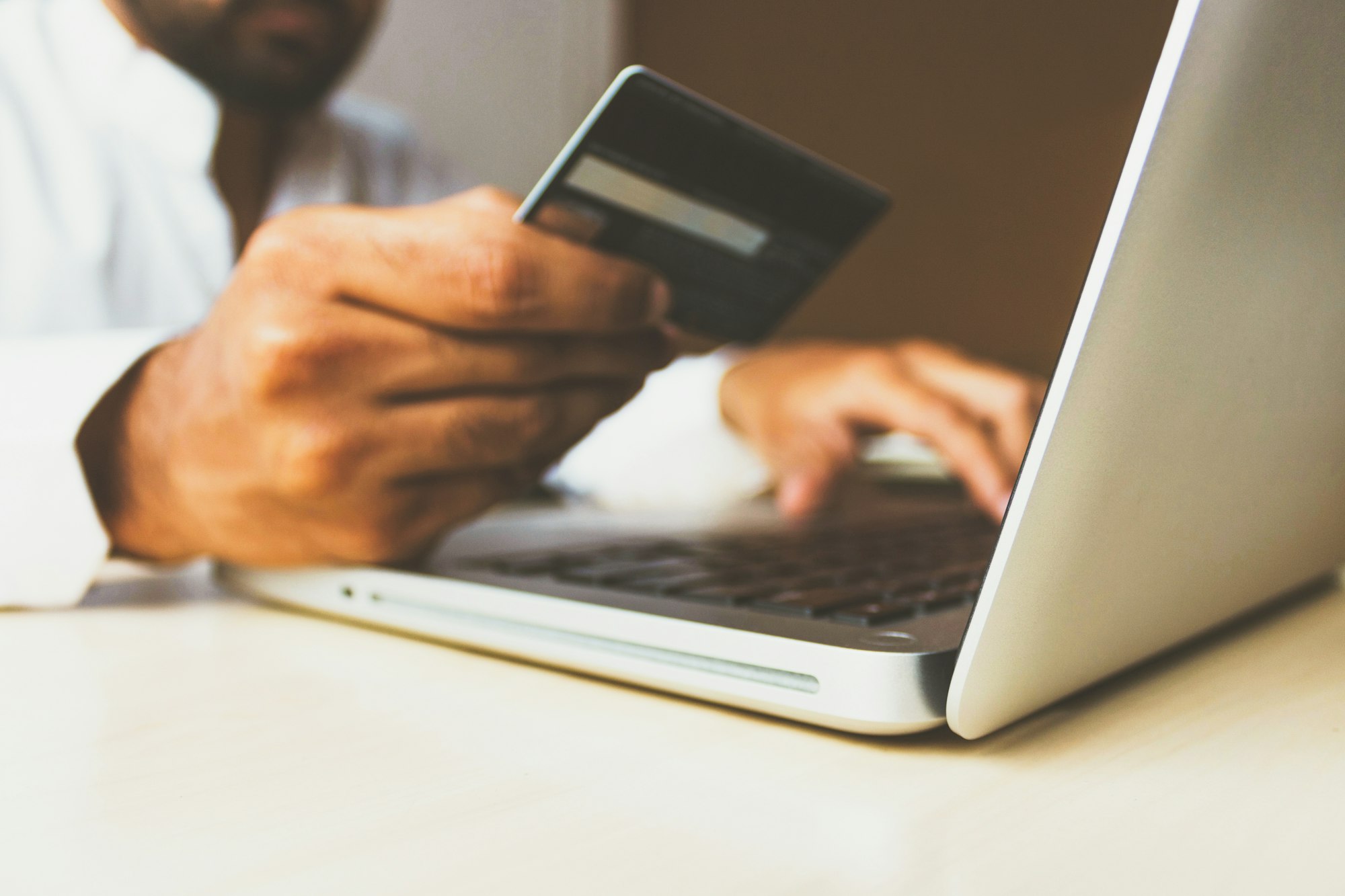How to Enhance AOV with Personalized Recommendations at Every Touchpoint

eCommerce in 2024 is all about boosting profitability. While the usual metrics like conversion rates and sales volume are vital, there is one metric that drives profits more than most: Average Order Value (AOV).
AOV plays a crucial role in profitability without relying on acquiring more traffic, which can be costly. The key is to manage customer acquisition expenses effectively and increase transaction revenue.
One of the most powerful strategies to increase AOV is personalization, especially through tailored product recommendations. However, many marketers overlook the valuable chances to leverage personalization across the entire buyer journey. They often concentrate excessively on just one or two aspects, such as the typical in-cart product nudge.
Instead, let's explore the craft of end-to-end cross-selling and up-selling—a tailored strategy that adept eCommerce experts use to elevate their AOV from product discovery, through to post-purchase.
How Personalization Drives AOV
Research indicates that up to 83% of consumers are open to sharing their data for a customized experience, underscoring the importance they attribute to tailored shopping interactions. It's up to the merchant to really make the most of that data.
This kind of attention and understanding goes beyond just being nice; it strengthens the bond between customer and brand, boosts how customers see the value of their purchases, and ultimately amps up their satisfaction.
This personalized approach can really drive AOV by:
- Giving shoppers a reason to come back (often!) by offering personalized discounts and incentives.
- Creating urgency through time-sensitive offers that align with shopper behavior.
- Indicating related items, complementary products, or add-ons that match the shopper's tastes.
- Using customer purchase history and browsing behavior to present highly relevant product bundles that encourage a more significant purchase.
- Implementing dynamic pricing strategies, where product deals and special offers are tailored to the customer's demonstrated interest and willingness to pay.
In fact, businesses that offer personalization at scale see marketing cost reduction by 10-20%, a bump in sales conversion rates by 10-15%, and greater customer satisfaction by 20%.
Upsell and Cross-Sell Across the Buyer Journey
Creating a dynamic, thoughtful product ecosystem around a customer's profile can lead to multiple items being added to their cart. Upsell and cross-sell opportunities, when presented at the right moment, feel more like an intuitive step in the customer's purchasing decision and less like a pushy sales tactic. And it works—one McKinsey study found that cross-selling and other techniques for category penetration can boost sales and profits by 20%.
An upsell is a strategy for offering a product with enhanced features or improved quality, usually at a higher price than the chosen one. Some examples of upselling in eCommerce include:
- Offering a higher-priced alternative: Encouraging customers to purchase a higher-priced alternative of the product they are considering. For example, suggesting a more advanced or feature-rich version of a product.
- Tiered pricing: Presenting products in different tiers with varying features and prices, encouraging customers to opt for a higher-priced tier.
- One-click upsells: Target customers who have already added items to their cart and allow them to add a related, higher-priced item with just one click.
- Featured products: Promoting featured products or bestsellers that are higher-priced and offer more value.
- Free shipping thresholds: Offering free shipping for orders above a certain amount, encouraging customers to add more items to their cart to qualify for free shipping.
By upselling, you are essentially convincing customers to spend more and get a better product or experience in return, enhancing the value of their purchase, and boosting your AOV.
Conversely, cross-selling works by suggesting complementary products that enhance the original purchase or complete an outfit/look/set/etc. Some examples of cross-selling include:
- Bundled products: Offering bundled products, such as a case for an electronic device or accessories for clothing, can encourage customers to purchase additional related items together for a discount.
- Recommended products: Recommending relevant products based on what customers have viewed or are viewing can increase the total purchase amount. For example, suggesting a memory card when a customer is purchasing a digital camera.
- Complementary products: Recommending products that go with the item customers buy, such as suggesting a belt when a customer purchases trousers.
- Subscriptions: Offering customers the option to sign up for a subscription service for the products they are purchasing, which can increase customer loyalty and lifetime value
Techniques In Action: Case Studies and Strategies
Those new to eCommerce might only place personalized upsell and cross-sell touchpoints at the point of purchase. But as established eCommerce stores know, this is just one part of a bigger picture where personalization is leveraged to enhance AOV.
Compound Studio used One-Click Upsell (OCU) to promote SKUs with a lower cost of goods and surplus inventory. By using the OCU page to feature items with favorable cost structures and surplus stock, Compound Studiowas was able to recapture potentially lost revenue and enhance the overall purchasing experience. This overall strategy resulted in a notable 10.23% boost in AOV.
Another example comes from Concrete Countertop Solutions—a home hardware brand using the Shopify platform. After taking the time to understand their customers and their unique needs, they began bundling products and presenting them under a "Frequently Bought Together" section. By using this tool at checkout, their stores boosted sales by presenting customers with related products to complete their DIY projects. Overall, they saw an AOV lift of 31%.
16 Ways Personalized Product Recommendations Can Boost AOV
To simplify things, we'll break down some of the lowest-hanging fruit for you to boost AOV through product recommendations. And we'll throw in a few out-of-the-box examples to get your creative juices flowing. We'll separate them into three distinct phases: pre-purchase, checkout, and post-purchase.
Pre-purchase opportunities
Homepage recommendations
Personalized product recommendations on the home page can pique interest and direct attention to items that align with previous browsing or purchase history. Visitors are still in the discovery phase, making them more open to new suggestions.
For example, a customer who has previously purchased running shoes is likelier to click on a personalized recommendation for matching socks or workout gear. You could also showcase popular or sale items related to their past purchases to grab attention and potentially increase AOV.
Product page recommendations
Once customers browse a specific product page, personalized recommendations can be tailored to complement that item. For example, if a customer sees a dress, you could recommend shoes and accessories to complete the outfit. Or, for an electronic device, suggest compatible accessories or add-ons that enhance its functionality.
Email recommendations
Email is another effective channel to reach customers and increase AOV. Personalized product recommendations can be included in abandoned carts or pre-purchase emails to encourage customers to complete their purchases or make additional purchases based on their previous buying behavior.
Checkout opportunities
One-click upsells
As mentioned earlier, one-click upselling is a powerful way to encourage customers to add an extra item at the point of purchase. This can be done by presenting related or complementary products that offer additional value, such as extended warranties or product upgrades.
Frequently bought together
As seen in the Concrete Countertop Solutions example, offering frequently bought-together items at checkout can effectively increase AOV. By presenting products that are often purchased together, customers may be more likely to add them to their cart for a complete purchase.
Checkout add-ons
Like one-click upsells, checkout add-ons offer customers the option to enhance their purchase with related products. This can include items such as protection plans, gift wrapping, or expedited shipping.
Free shipping thresholds
Offering free shipping for orders above a certain amount effectively adds perceived value for customers. By showing customers how close they reach the free shipping threshold at checkout, they may be more inclined to add additional items to their cart to qualify for free shipping.
Post-purchase opportunities
Thank you page recommendations
After a successful purchase, the thank you page is an opportune moment to showcase personalized product recommendations. This can include items that complement the purchased product or related products that may interest the customer based on their previous buying behavior.
Replenishment reminders
For products that require replenishment, such as skincare or household items, sending personalized reminders can encourage customers to make repeat purchases. These reminders can be tailored based on the average time between purchases for that particular product, making it a relevant and helpful reminder for the customer.
Loyalty programs
Implementing a loyalty program where customers earn points or rewards with each purchase can incentivize them to increase their purchase amount. This can be done through personalized emails or targeted advertisements showcasing the benefits and rewards of reaching a certain tier in the loyalty program.
Subscription services
Offering customers the option to sign up for a subscription service after their purchase can provide both convenience and an opportunity for recurring revenue. By tailoring the subscription options based on the customer's previous purchases, you can increase the chances of them signing up and boosting AOV through monthly or yearly payments.
Unique areas for product recommendations
Mobile app
For brands with a mobile app, personalized product recommendations can be integrated seamlessly into the shopping experience. This could include in-app push notifications or recommendations based on location or browsing history.
Social media channels
Using social media channels such as Facebook and Instagram to showcase personalized product recommendations is another way to reach customers and drive them back to your online store. By using targeted ads or sponsored posts, you can showcase relevant products to past customers and potentially increase AOV.
Pop-up shops
Physical pop-up shops have become a popular way for brands to connect with customers and showcase new products. By incorporating personalized product recommendations into these pop-up shops, you can continue to drive sales and increase AOV even in a temporary retail space.
Contests and giveaways
Contests and giveaways are a great way to engage with customers and reward them for their loyalty. By including personalized product recommendations as part of the prize or giveaway, you can drive excitement and encourage future purchases from the lucky winners.
Influencer collaborations
Collaborating with influencers who align with your brand can be a powerful way to showcase personalized product recommendations to their followers. By leveraging their influence and trust with their audience, you can reach a larger customer base and potentially increase AOV through targeted promotions and recommendations.
Get Started with Personalized Product Recommendations
Each business is different. So, think of this guide as a buffet, not a script. Choose the strategies that speak to you and start testing your way to a successful business. Remember, a whopping 80%+ of consumers are looking for an enhanced personalized shopping experience. It's simply up to you to use that data meaningfully and personally to drive sales and increase AOV.
The simplest and most effective way to get started with personalized product recommendations is by using a tool that can do it all for you. If you're ready to boost AOV, check out AfterShip Personalization to implement most of the tactics mentioned in this article.

